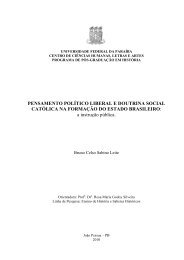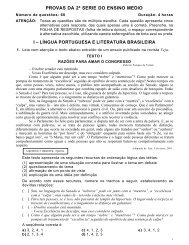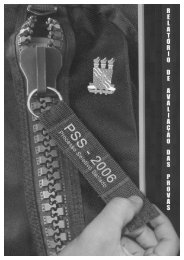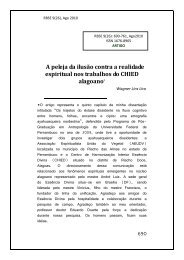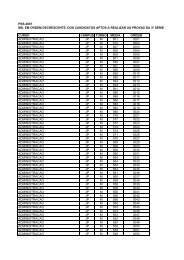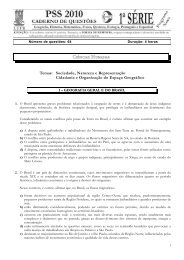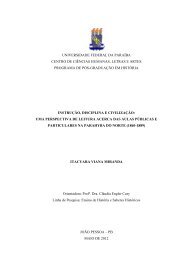abril de 2004 - CCHLA - Universidade Federal da ParaÃba
abril de 2004 - CCHLA - Universidade Federal da ParaÃba
abril de 2004 - CCHLA - Universidade Federal da ParaÃba
You also want an ePaper? Increase the reach of your titles
YUMPU automatically turns print PDFs into web optimized ePapers that Google loves.
Generated by Foxit PDF Creator © Foxit Softwarehttp://www.foxitsoftware.com For evaluation only.MARTINS, Regina Helena Oliveira eTELAROLLI, Teresa Cristina. Experiências <strong>de</strong>violência: gangues e armas. RBSE, v.3, n.7,pp.62-89, João Pessoa, GREM, Abril <strong>de</strong> <strong>2004</strong>.ARTIGOSISSN1676-8965Experiências <strong>de</strong> violência: gangues earmas.Regina Helena Oliveira MartinsTeresa Cristina TelarolliRESUMOPropomos uma reflexão doimaginário artístico-cultural barroco,basea<strong>da</strong> em uma socie<strong>da</strong><strong>de</strong> <strong>de</strong>apreensão "estético-afetiva", <strong>de</strong> acordocom os termos do sociólogo francêsMichel Maffesoli. A existência socialnestes mol<strong>de</strong>s se torna mais fortementeperceptível nos momentos em que aforça <strong>da</strong> emoção, na constituição social,predomina. Enten<strong>de</strong>mos que a culturabarroca representa um <strong>de</strong>sses períodos<strong>de</strong> múltipla <strong>de</strong>terminação quando asensibili<strong>da</strong><strong>de</strong> estética é <strong>de</strong>staca<strong>da</strong> comoum parâmetro ou como um estilo <strong>de</strong>vi<strong>da</strong>. Ao pensar nas culturas barrocascomo um estilo estético-afetivo ou comoimagem <strong>de</strong> um período <strong>de</strong> tempo,privilegiamos a análise interpretativa e ocritério qualitativo <strong>de</strong> pesquisa nanatureza <strong>de</strong>scritivo-antropológica.Palavras-chave: barroco, estética,imaginário, emoção.ABSTRACTWe propose a reflection ofthe baroque artistic-culturalimaginary, based on an "estheticaffective"apprehension society,according to the terms of the Frenchsociologist Michel Maffesoli. Thesocial existence in these moldsbecomes stronger perceivable in themoments of the time where theforce of the emotion, in the socialconstitution, predominates. Weun<strong>de</strong>rstand that the baroque culturerepresents one of these times ofmultiple <strong>de</strong>termination when theesthetic sensitivity is un<strong>de</strong>rlined asparameter or as life style. Thinkingof the baroque cultures as anesthetic-affective style or as imageof a period of time, we privilege theinterpretative analysis and thequalitative criteria of research within<strong>de</strong>scription-anthropologic nature.Keywords: barroque, esthetic,imaginary, emotion.Este artigo tratará <strong>da</strong>quilo que chamamos <strong>da</strong>violência juvenil que está muito mais associa<strong>da</strong> à questãodo processo <strong>de</strong> juvenilização <strong>da</strong> violência do que a umadistinção conceitual propriamente dita sobre violência.Desta forma, lembramos que por violência juvenilenten<strong>de</strong>mos atitu<strong>de</strong>s <strong>de</strong> adolescentes e jovens em i<strong>da</strong><strong>de</strong>escolar, que cometem <strong>de</strong>s<strong>de</strong> transgressões <strong>de</strong> pequenoporte, como furtos em supermercados até assaltos a mãoarma<strong>da</strong>; agressões físicas, verbais e simbólicas contra62



